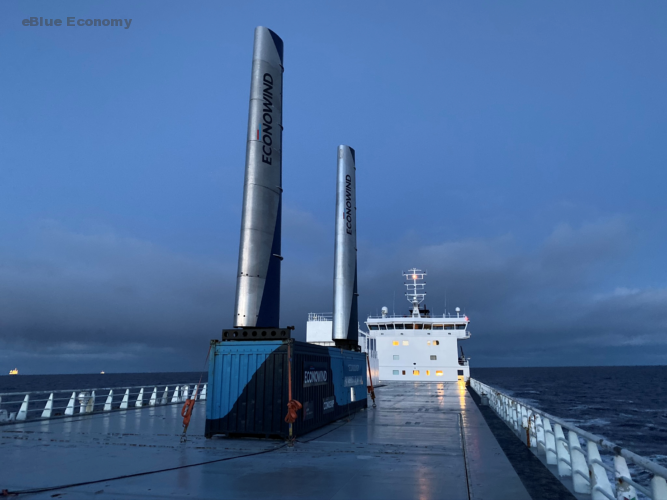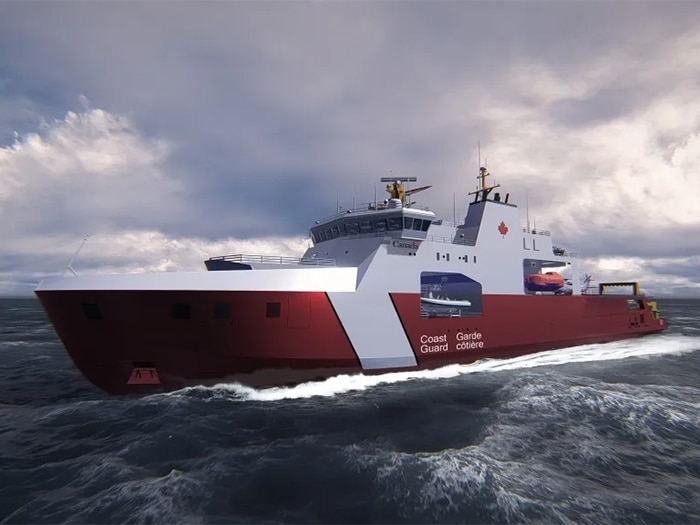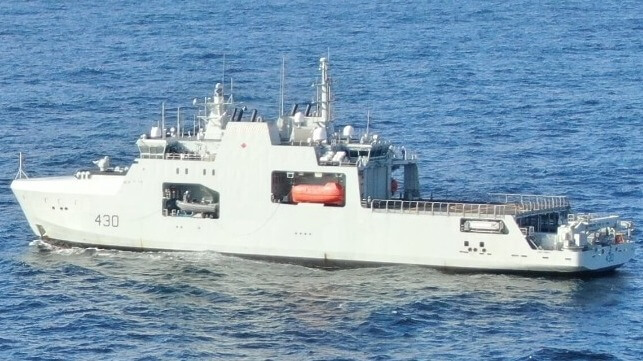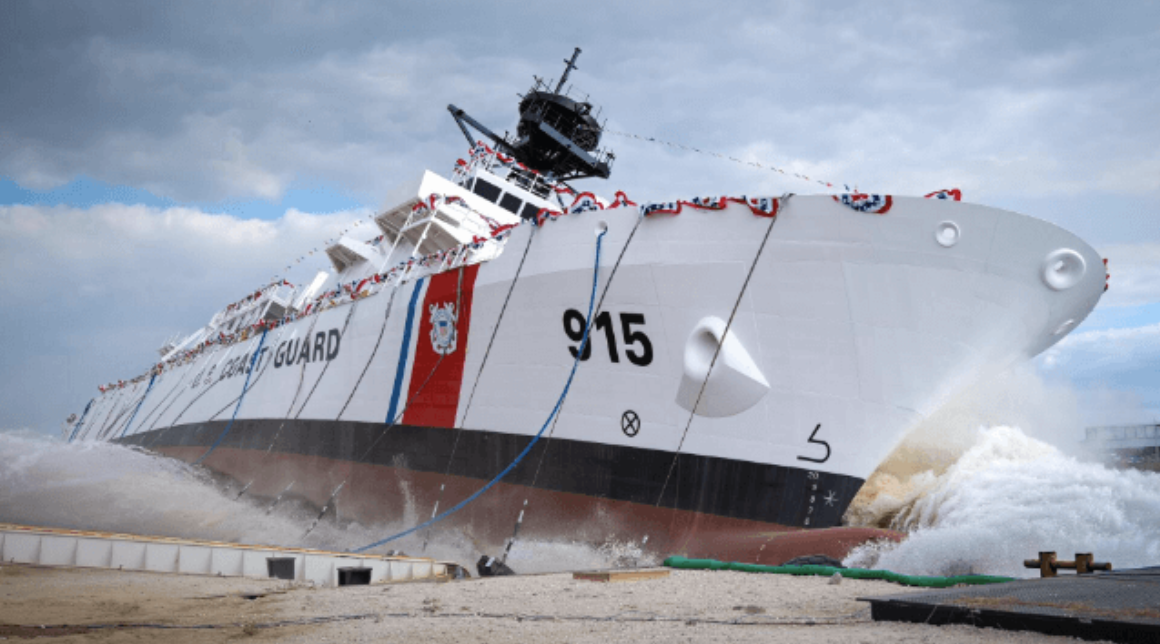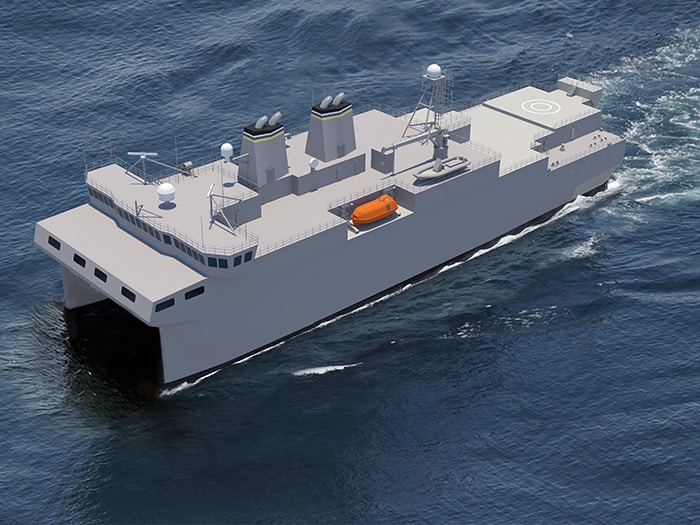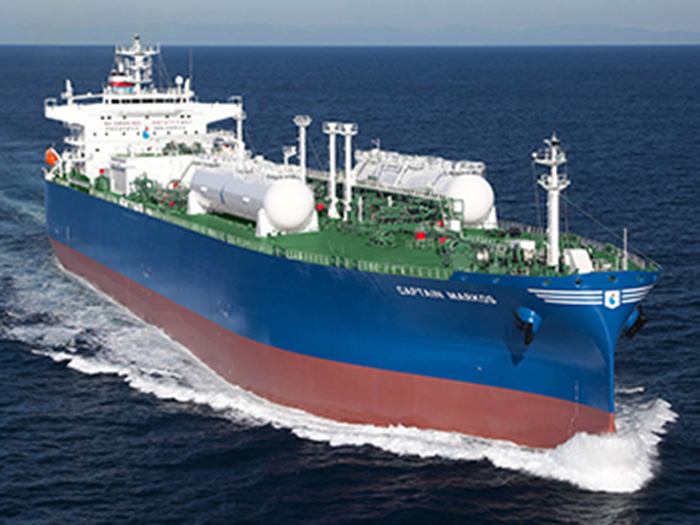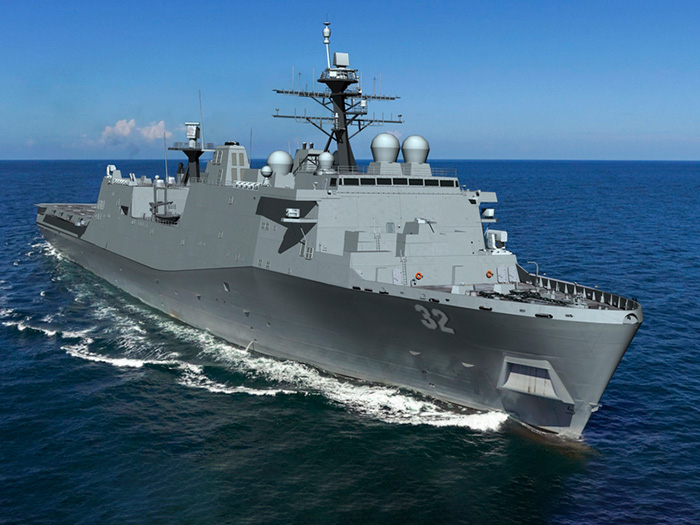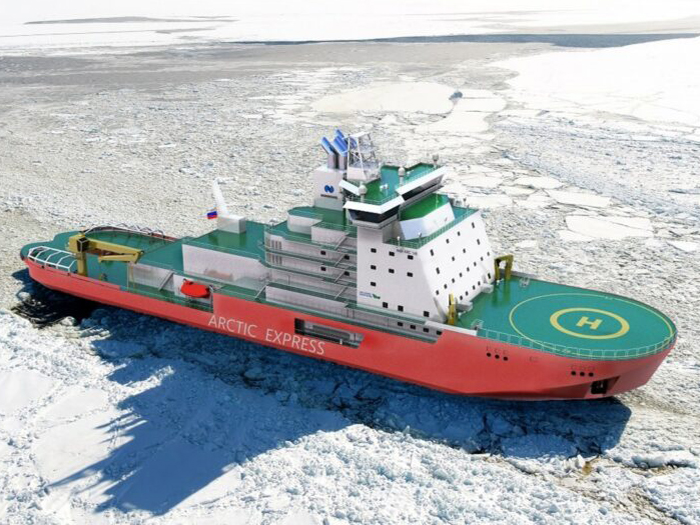Gavin Allwright, secretary general of the International Windship Association. That might not sound so many, but he goes on to count over 30 more due to arrive before the end of 2022
Wind is picking up, writes Stevie Knight
“We developed a technical standard a year ago, and we’ve been overwhelmed with enquiries for certification options, AiPs, and early-stage risk analysis,” says Hasso Hoffmeister of DNV GL.
It helps that break-even has now been reached for a number of segments, “the OPEX savings now roughly balance the extra CAPEX at current fuel prices”, adds Hoffmeister’s colleague Uwe Hollenbach.
“We’ll probably have 13 larger wind-assisted cargo ships in the water by the end of this year,” says Gavin Allwright, secretary general of the International Windship Association. That might not sound so many, but he goes on to count over 30 more due to arrive before the end of 2022, adding “there’s now a strong, rapidly maturing pipeline”.
A sea change is indeed underway: “The owners, the shippers, they’re not just customers, they’re stepping forward and getting directly involved – take MOL, that’s partnered with Oshima Shipbuilding to drive the project through the AiP and on into detailed design,” says Allwright. Even more interestingly, “Neoline is teaming up with people like Manitou, Renault and Beneteau”, he comments.
It’s significant that the IWSA
It’s significant that the IWSA is no longer just a technology group, members include three major shipping companies, two class societies “and we’ve a shipbuilder on our executive committee”, he adds. Further, Wärtsilä is to integrate Anemoi’s rotors within its Propulsion business: this shows where wind tech properly belongs, says Allwright: “It’s not just an additional ‘efficiency’ measure.”
Early commercial take up has so far favoured towers “with their fairly small footprint for delivered power”, says Hoffmeister. There are now seven Flettner assisted vessels, including a tanker, a bulker, ro-ro, general cargo vessel and a couple of ferries: the technology achieving a Magnus effect – a pull, more or less perpendicular to the wind – by using low power motors to rotate a cylinder against the airflow.
But as Hollenbach points out, “since efficiency is related to size”, there’s a clear driver for scaling up.
For example, Norsepower’s 2014 installation onboard MS Estraden a 9,700dwt ro-ro operating between Holland and Teesport installed a pair of 18m tall, 3m diameter flettners, reducing the ships’ average fuel consumption by 6.1% – around 400t per year.
Not bad, but compare that with the 2018 installation of two 30m by 5m diameter rotor sails last year on the LR2 tanker Maersk Pelican – which made verified savings of 8.2%. Further, a recent Norsepower contract for the SC Connector (installation at time of writing), has taken it up to 35m high – and the estimates are that these two should save around 25% in fuel overall. The sixth project – this time on a bulk carrier – promises to be at least as large.
Likewise, Anemoi’s installation onboard Blue Planet Shipping’s 64,000dwt, MV Afros are 16m tall, but in a big step forward there were four of them, arranged down the starboard deck. And there’s growth in all directions: the company now offer a 35m-high, 5m wide rotor sail.
A related, but distinct development is the aspirated tower which achieves a similar result without rotation. Instead, it uses suction and a slightly wing-shaped profile to help magnify the wind effect.
These units are generally a little smaller – but Econowind has aimed straight at lowering the bar for a wide range of vessels: for example, a modest, containerised version held in place with standard twist locks has been trialled on a DFDS ferry and lately, on a research vessel. There’s also a 10m pair of its Ventifoils being fitted onboard the 6,477dwt MV Frisian Sea.
However, even though these device are more modest overall, scaling up is still on the cards: a commercial installation onboard MV Ankie, a 3,600dwt general cargo vessel, has recently been raised from 10m to 16m by adding extensions. Further, Econowind is “in conversation” about 20m Ventifoil contracts.
SAILS
So where are the sails? While they’re a well-known sight in the racing world, Hollenbach says they’ve “not yet made it to commercial reality” onboard big cargo ships.
This is about to change, as sail rig ships appear set to fly ahead, lifted by “significant commercial backing” from the specialist ro-ro market “among others”, says Allwright.
Take VPLP/Ayro’s Oceanwing: this has just gained its first commercial ship contract onboard Canopée, the Ariane 6 rocket transporter. These narrow, fully rotating and reefable soft sails generate extra thrust by dividing the sail area in two, the slot accelerating the airflow and pulling the turbulence to the following edge.
Of note is the vast, 22-fold jump in scale between the first 65m2 sails onboard the Energy Observer research craft and these 30m-high versions. Together these will provide a surface area of 1,452m2, delivering 30% fuel savings between Europe and the launchpad in French Guiana.
Then there’s the Neoliner ro-ro: despite its 4MW of onboard diesel-electric propulsion, this is primarily a wind ship – and it looks like one. This has a slender, 136m long, 24m beam with a long, fine bow and a 6,500t capacity: above are cross-linked pairs of folding masts which hold automatically deploying, triangular soft sails. These extend to offer a 4,200m surface, from which it’s hoped to gain up to 80% of the vessel’s propulsion energy.
Notably, Neoline is offering more than a single ship – it’s a full, transatlantic link which will transport both Beneteau’s boats and Manitou’s machinery to the US. Further, Renault has recently signed a cargo-based agreement for a pair of cross-Atlantic ro-ros to start car deliveries in 2022.
But Hoffmeister notes, “we are getting a lot of enquiries for bigger, long-range bulk vessels above 10,000dwt, especially ore ships and tankers”. That factor alone is enough to push up the size.
For example, Drax, operator of the UK’s biggest power station (and a huge decarbonisation project in its own right) is interested in the potential 20% savings from fitting a 229m, 67,657dwt biomass carrier with six, steel and aluminium FastRig wingsails, together yielding a 2,628m2 surface. Despite derailment by Covid-19, the Smart Green Shipping Alliance still hopes to get the demonstrator launched inside the next few years.
Stepping up again, a MOL and Oshima Shipbuilding partnership is looking to bring its Wind Challenger bulk carrier off the table and into the water around 2022. This initial 80,000dwt design has just one stiff sail which telescopes down to reduce wind surface, reducing fuel and GHG emissions by 8% on Japan-North America west coast transit. However, it won’t stop with a single rig: there’s already an 180,000dwt bulker concept, the nine sails yielding a total area of 9,000m2.
Finally, following a China Merchants Energy Shipping trial of large twin rigid sails onboard New Veracity, the company has now a 307,000dwt wingsail ship on order from the Dalian yard for 2022 – details are hard to come by but the rigs stand to be substantial.
KITES
Kites, which utilise stable, high winds between 100m and 300m above the sea surface, are also re-emerging.
It has to be said, the tech has had a somewhat patchy history: little came from the planned commercial installations a decade or so ago – market forces of one kind and another played a part in tripping up development. However, there’s been one technical sticking point in particular: getting the kite back in the box. Autonomous retrieval took “all our combined maritime and aerospace know-how” to accomplish says Airseas’ Matthew Smith.
Now they’re back, and scaling up “to address the biggest vessels on the market”, he adds. Again, there’s deep commercial ties: the first 500m² Seawing will be installed on parent company Airbus’ Ville de Bordeaux ro-ro next year, while the second bulker installation on a will double that at 1,000m2 – the AiP being achieved through a joint project with K-Line.
This might help kites spring far ahead of the pack in terms of contracts: Smith says alongside ongoing “commercial discussions” with more than 20 other ship owners, K-Line is also considering orders for a further 50 units.
WIND FORCE
There are, however, challenges for ships with a higher ratio between wind surface area and vessel displacement, especially as the most-quoted expected average – not peak – efficiency for sail rigs is around 30%, which inherently requires extended, larger wind contribution.
Take food giant Cargill and BAR Technologies’ strategic project with naval architect Deltamarin. This will see BAR’s WindWings – large, solid sails that measure up to 45m in height – fitted to Cargill’s ships.
According to Deltamarin’s Esa Jokioinen, some deck strengthening is necessary: the forces are “comparable to a bulk carrier deck crane” he explains, so positioning of the rigs where they gain existing structural support means additional steel can be minimized. But even these big installations leave heel and stability under control.
However, he says “the biggest optimization task is the steering and propulsion arrangement” as with increased thrust from the sails, “propeller load will reduce… as will the flow to the rudder and therefore the steering force”.
It’s a challenge for all these vessels, and various solutions are on the table. For example, Neoliner’s design incorporates a slender shape and removable fins to help counteract drift, while Hollenbach adds that Enercon’s four rotor project cargo vessel E-Ship 1, has a conventional rudder positioned in the propeller slipstream, “but also two big sailing rudders at the sides”. Nico Van der Kolk of wind integrators Blue Wasp also points out that introducing an extended, low-aspect-ratio keel “will help keep course stability” in conditions where the potential benefits are high.
There’s a further layer of consideration for more general carriers. Rather than being a specialist service vessel, the Detamarin/BAR development is a traditional, 40,000dwt medium range product tanker. This constrains the design: “We want to maintain the standard main dimensions and layout to ensure it can still trade at different terminals,” says Jokioinen.
The details of the solution are still under wraps, but it hinges on very careful steering and hull optimisation says Jokioinen, adding that “it wouldn’t even be possible” without the CFD and simulation tool advances of the last few years.
Interestingly, Eco Marine Power (EMP) should be launching a trial next year of a stiff sail that will harvest both wind and solar energy, integrating this with energy storage via its onboard Aquarius management system.
Further, with higher wind ratios, the position of these devices “can have a dramatic influence”, adds Van der Kolk’s colleague Giovanni Bordogna. “Put them in the wrong place, and you might find you’re continually compensating with the rudder,” he underlines.
UPWARD
Sheer size promises to present more of an issue as time goes by. Wallenius Marine’s Oceanbird, while not under contract as yet, is an automotive ro-ro with a 7,000 car capacity: this could be equipped with no less than five 80m wing rigs to allow sailing on wind alone with diesel engines retained only for manoeuvring and backup.
The idea is to reduce emissions by up to 90% but for ships like this, the only way forward “is to design an entire vessel from the base”, comments Hollenbach. Movable fins will help correct drift angle and so on but the 200m design has also added an extra 10m or so to its beam along the way, to help compensate against the forces generated by the vast sail area.
“If you are looking at savings anywhere near that magnitude, then you have a number of tremendous sailing forces to counteract,” says Hollenbach, including side forces generated by the wind rigs.
Even lesser wind effects could still create undesirable heel for certain ship types: “We’ve already seen some projects where a ballast water system has been discussed to help produce righting moment,” explains Hoffmeister. “In general that’s better than fixed ballast, but stability criteria have to be fulfilled – even if the wind suddenly changes direction and you get caught with the ballast on the wrong side. So, you need to counteract the change of wind fairly quickly with fully redundant measures.”
One salient point here: while this heeling issue may be somewhat lower for rotors, it doesn’t apply to kites, “as the traction is at deck level, allowing vessels to sail as usual” says Smith.
TWEAKS
Commerciality isn’t only about fuel efficiency; there are other factors. One shipowner went on record saying the requisite height and space would “inhibit” wind power onboard bulkers – so a lot of work has gone into answering the issue.
For example, Anemoi’s four-rotor installation was only possible because the company has worked hard on both a folding rotor and a rail system that can move the units around the deck transversely or longitudinally. Anemoi’s COO, Nick Contopoulos, commented that “Anemoi’s deployment systems have been installed and proven to work on globally trading bulk carriers, reducing the operational impact for vessel owners and stakeholders.”
Notably, Norsepower and owner SeaCargo have also partnered up to develop a folding solution – and most of the wind rigs telescope or collapse. It seems to be the way forward: Norsepower’s CEO Tuomas Riski adds the ability to lower during bulk cargo operations as well as navigating height-restricted routes “has already opened up markets”.
SIGHTLINE
There are other points to consider: “One challenge for the Deltamarin tanker is that the sails will result in a 20deg blind spot across the main deck from the wheelhouse,” explains Jokioinen, adding the only answer may be a camera and sensor combination on the bow.
However, towers don’t necessarily avoid scaling-up challenges. “While these first smaller installations are fairly narrow and present no line of sight, no radar blind segments and no navigation issues”, says Hoffmeister, that might not continue to be the case with the larger, multiple installations.
Again, it’s worth noting that kites manage to avoid a number of these issues. Seawing, for example, can be installed “in a very compact system on the foredeck” says Smith – and kites are probably the only solution for retrofit onboard box ships as their container stacks eclipse the wind flow.
ANOTHER WORLD
Some are taking the need for an entire ship redesign very seriously. For example, Vindskip’s concept has the hull itself generating pull. The automotive carrier’s form rises high out of the water, translating an apparent wind angle of around 40-degrees to a low-pressure effect at the bow. It doesn’t just provide auxiliary propulsion; this also reduces the typical aerodynamic drag by up to 75%.
Further, the below-water shape yields a great deal of stability. Compared to a similar 6,000 capacity car carrier which requires 5,000t of ballast, the Vindskip can do the job with only 400t, says CEO Terje Lade. This “gives a great advantage” for hydrodynamic resistance he adds, reflected in lower fuel consumption.
Overall, Vindskip estimates it will emit 63% less CO2 than similar capacity car-carrying vessels currently in service, and it’s developing a solution that combines wind and LNG “to achieve the lowest possible emissions in its market segment” says Lade.
VOYAGE PLAN
“Speed has a big impact on viability,” says DNV GL’s Jan-Henrik Hübner.
“If you ask ‘can I save 90% of the fuel with a conventional vessel sailing at 18kn’, the answer is simply no, but at 10kn, it’s very much yes.” For that reason alone, some vessel types aren’t that suitable for wind assist, including the high-paced gas carrier or fast ferry segments.
Schedule flexibility is central. If the loading or unloading at the port has to be tightly managed, then there’s limited potential. However, “if you can allow plus or minus five or seven days, you can leverage wind’s advantages to a greater extent”, says Hübner.
It’s a point underlined by James Mason: he’s been involved in voyage optimisation (VO) development for the University of Manchester’s Tyndall Centre. While it might be worthwhile motoring out to “catch a good wind” says Mason, he adds that “altering the route at a constant speed provides a lot more power from the sails, but you actually consume more in total than if you spent the same time slowing down”.
These wind ships will most often find a useful pairing with VO, “which can make less than optimal routes efficient”, says Mason. However, it does lean on a high degree of automation, as much of the time efficiency will require a complex, three-way trade-off between speed, efficiency and route.
For example, the Vindskip project incorporates an advanced weather routing system from Fraunhofer CML and something Lade describes as “cruise control”, which keeps the ship moving at a constant pace even if the wind varies. In fact, the automation is so central to the design that Høglund Marine Solutions has taken a two-thirds stake in the company.
INVESTMENT
Wind assistance is on the cusp of being more cost-effective than traditional propulsion, but “the whole finance system is not fit for purpose”, says Diane Gilpin of the Smart Green Shipping Alliance, adding banks are averse to accepting unfamiliar tech onboard ‘their’ asset. Allwright notes a mechanism to shift the initial investment burden towards OPEX, possibly through pay-as-you-save schemes or even rental units would help, especially when backed by verified savings.
Further, being able to treat wind assist units as both modular and flexible could make a lot of sense, as cargo ships do change route. Interestingly, Anemoi has made another vessel, MV Axios, the first ‘wind ready’ design by incorporating elements such as the railing system. The idea is that wind-ready ships could do more than yield easy retrofits; they may also allow owners to switch units between their fleet.
NOT ALL ABOUT SIZE
Despite the drive for size, bigger is not always better and some are looking at hitching efficiency up a couple of notches at the smaller end of the market. Take Econowind’s recent TwinFoil development, soon to be installed on the 88m, 2,400dwt MV Tharsis.
These have gained efficiency from an extra ‘flap’ to direct the air current, but they are very lightweight. The requirement for Tharsis has been to stay under 2,500kg: that’s necessary to retain cargo capacity in low water river transits. Econowind’s folding versions can be put on dedicated stanchions or a lightweight ‘flatrack’ that can be lifted away from the hatch covers. Importantly for this particular ship, these folded, flat-racked units are light enough to be raised by the vessel’s onboard gear
Source : The Motor Ship


